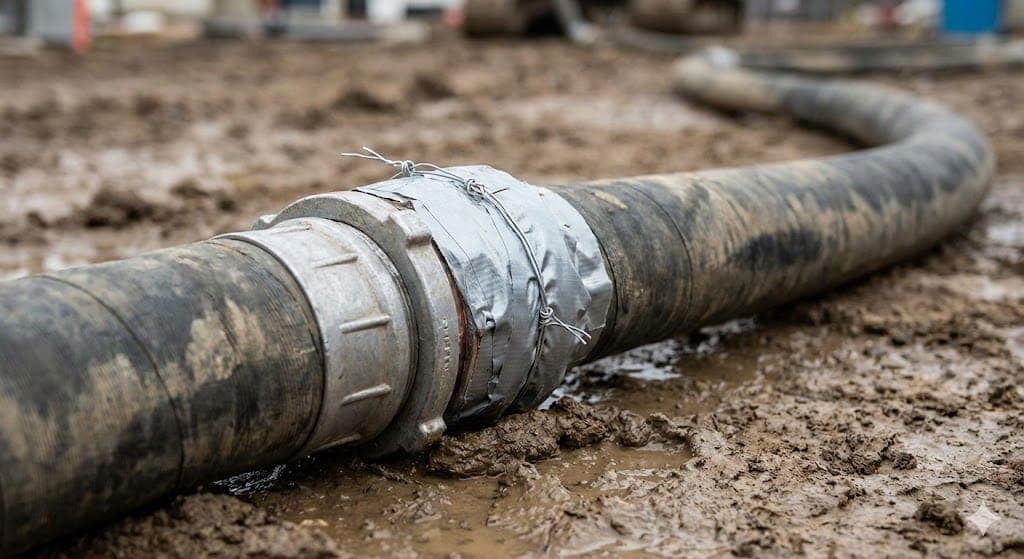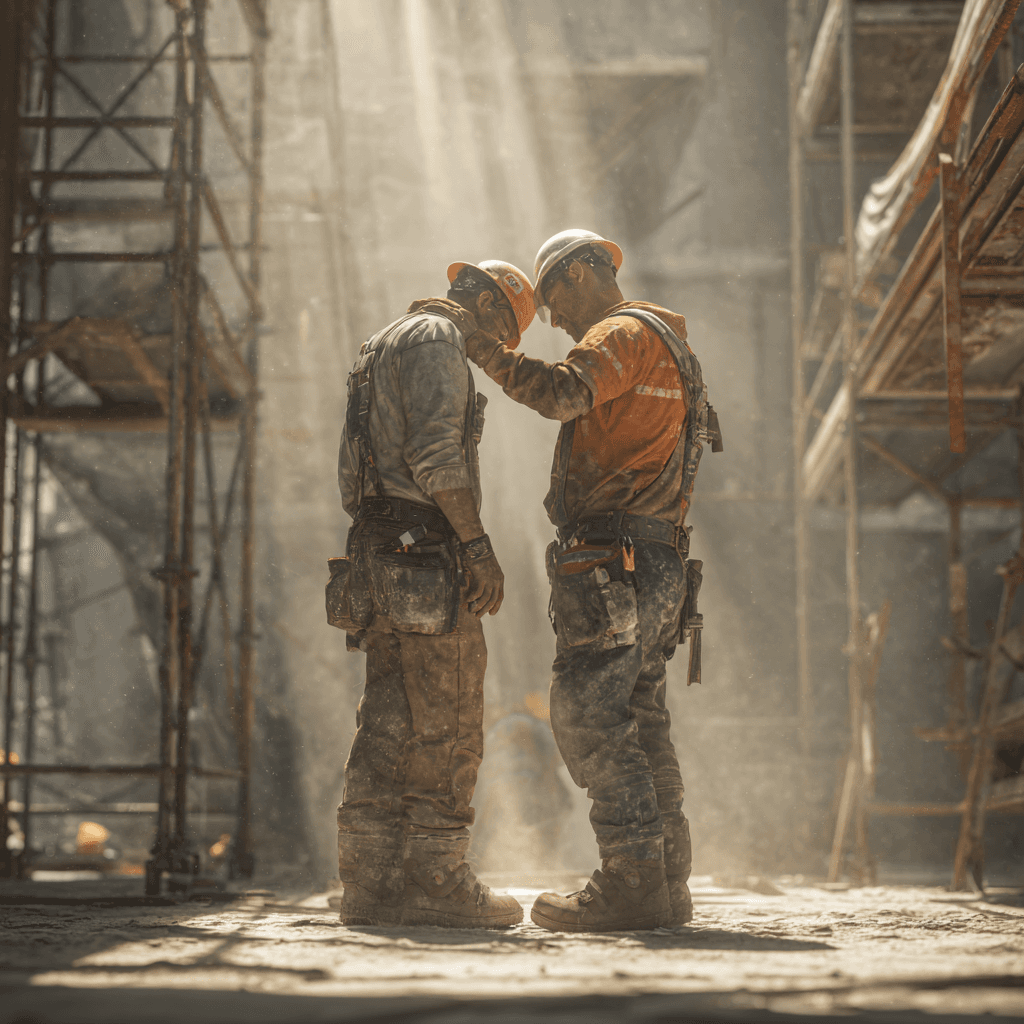Preventing serious injuries and fatalities (SIFs) with AI

Brady Keene
Co-founder, COO and Head of Safety

At a glance
An introduction to SIFs. Focus on high-energy hazards, not minor injuries. Spot precursors like shortcuts, repeats, and fatigue. Build capacity instead of blame with real controls that hold under pressure. Measure leading indicators like closure time, verification, and exposure trends. Use AI to surface patterns early so crews act before conditions line up with serious harm.
What is a SIF?
A serious injury or illness is one that poses an immediate threat to life or, if not quickly treated, could result in death. These situations often require emergency responders to provide life-sustaining care. Serious cases may also cause permanent changes, such as the loss of an organ, body function, or limb. Examples include severe head trauma, paralysis, amputations, heart attacks, and major fractures.
Why do SIFs Occur?
Serious injuries and fatalities don’t happen because people stop caring or because they forget the basics. They happen when high-energy hazards like gravity, motion, or electricity meet the real constraints of the job. Plans are made on paper, but in the field the work is never that clean. Weather shifts, equipment breaks, deadlines tighten, and people adjust. That gap between the way the job was imagined and the way it actually gets done is where SIFs often live. This interaction between work as planned and work as performed is often referred to as drift and is a component of Human and Organizational Performance (HOP).
Controls that look strong in theory may not hold up under pressure. Guardrails get removed to speed up a lift, lockout steps get skipped because production can’t wait, or fall protection is used in ways it wasn’t designed for. When those layers thin out, only capacity, the ability to recognize and recover, stands between a worker and a life-changing event.
Organizations sometimes measure the wrong things. They chase recordable rates or minor injuries while overlooking the exposures that could end a life. The truth is, a cut finger tells us very little about whether we are controlling the energies that can kill or disable. To prevent SIFs, the focus has to shift from counting injuries to understanding the conditions and choices in the moment of work.
How do you prevent SIFs?
Serious injuries and fatalities cluster around high-energy sources like gravity, moving equipment, electricity, and stored pressure. Start each shift by naming the energy in the work. Ask what stops a fall from twenty feet. Ask what keeps a hand out of the excavator's swing radius. Ask what prevents an arc flash at the panel. Ask what makes a hydraulic release or an unexpected start impossible. Let AI surface the highest energy tasks first so attention goes where it matters and noise becomes a signal. This can be done via voice or via text.

What are SIF Precursors?
Precursors are the patterns that arrive before the event. Repeated high-energy findings on the same task. Controls that drift between shifts. Slow closures around the same equipment.
Here are a few SIF precursor examples:
- Production pressure leading to shortcuts
- Rising trend of near misses in the same location or task
- Repeat findings during inspections with no lasting fix
- Inexperienced or short-staffed crews on complex work
- Fatigue from long hours or back-to-back shifts
- Controls drifting or removed between shifts
- Lack of supervision during critical, high-energy tasks
AI can make these signals easier to see. It can group exposures by energy, area, contractor, and time of day so patterns stand out sooner. Instead of waiting for a near miss report or an injury log, AI helps highlight where drift may be forming. It points to tasks that carry the most energy and spots where closure is lagging. The picture isn’t perfect, but it gives leaders an earlier view so they can act before conditions line up for something worse.
Build capacity, not blame
People solve problems. AI does not take that away! It makes the problems visible sooner. Plans look clean on paper, but real work drifts when friction shows up. Deliveries run late. Lighting is poor. Drawings are unclear. The noise is constant, the air is hot, or the wrong tool is on hand. These aren’t excuses, they are conditions that push people closer to risk.
AI helps you spot the patterns before they settle in. It clusters signals across jobs and shifts for example: repeat exposures around the same equipment, or energy sources that keep showing up in observations. Those patterns show where the next serious problem could land.
The response is not more paperwork. It is capacity: better staging, a spotter in the right place, a verified lockout point, a lift plan that works, or a sequence that keeps people out of harm’s way. When you add capacity, safe and production stop competing. They become the same path.
Measure indicators that predict SIFs
- Time to closure for high-energy items: median hours from observation to a verified fix.
- Verification rate: percent of findings closed.
- Repeat condition rate: percent of repeat findings by task and energy within thirty days.
- Exposure trend on highest-energy work: rolling average exposure score for the top tasks.
When these move the right way, SIF potential comes down.
Where Sophie helps
- Use AI safety assistants with cited answers so supervisors can make confident calls in the field.
- Use 30-second observation reporting so crews can speak, snap, and send without leaving the job.
- Use predictive SIF patterns in Analytics and Insights to see clusters by energy, task, contractor, and shift.
FAQ
1. What makes a hazard “high-energy” and why does it matter for SIF prevention?
High-energy hazards like gravity, motion, electricity, and pressure can cause life-changing harm. Preventing SIFs means focusing on these, not minor injuries.
2. Why do serious injuries and fatalities happen even when workers know the basics?
They happen when real work drifts from the plan: deadlines, poor conditions, or broken equipment weaken controls and increase risk.
3. How can AI help identify SIF precursors before they turn into life-changing events?
AI spots patterns like repeats, shortcuts, or fatigue by clustering signals across jobs, energy types, and shifts, making risks visible sooner.
4. What leading indicators should organizations measure to lower SIF potential?
Track closure time, verification rate, repeat conditions, and exposure trends. These show whether high-energy risks are truly being controlled.
Related Posts
Continue reading with these related articles


